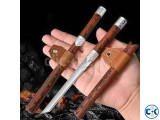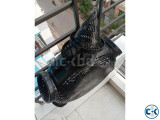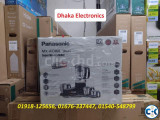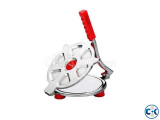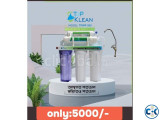My ClickBD
Brand new
Reverse Osmosis Water Purifier AWT RO 50 G_A
Lowest price in Bangladesh:
Highlights
- New/Used: New
- Type: Water Filter
- Color: nill
Seller info
Sold by:
PURE PLUS CORPORATION
Member since:
13 Mar 2014
Location:
Dhaka Khilgaon
Safety tips:
Don’t pay in advance
Meet in a safe & public place
Meet in a safe & public place
Description
DESCRIPTION for Reverse Osmosis Water Purifier AWT RO 50 G_A price in Bangladesh
|
Filtration Process: First Stage - Sediment Filter: The Sediment filter cartridge is manufactured from pure 100% polypropylene fibers. The fibers have been carefully spun together to form a true gradient density from outer to inner surfaces. It is effective in removing dust, mud, rust and sand particles. Second Stage - Granular Activated Carbon Filter: This granular activated carbon filter is composed of high-performance activated carbon that effectively reduces unwanted tastes, odor, organic contaminants, chlorine, pesticides and chemicals that contributed to taste and odor. It is designed to allow maximum contact between the water and carbon, ensuring maximum adsorption Third Stage - Activated Block Carbon Filter: This block carbon filter is composed of high-performance Coconut Shell carbon using a patented process and made entirely from FDA-compliant materials that highly effective at reducing 17 hazardous metals: such as lead, radon, mercury, insecticides, odor and chlorine: taste & odor, from potable drinking water. The unique structure of the carbon block enables it to reduce Giardia, Cryptosporidium, amoeba, and Toxoplasma cysts and fine sediment particles down to 0.5 microns. It is ideal choice for a wide range of residential, food service, commercial and industrial applications. Fourth Stage - Reverse Osmosis (RO) Filter: Reverse Osmosis utilizes the unique properties of a semi-permeable membrane to allow fluid to pass while restricting the flow of dissolved ionic material. With pressure applied to impure water on the side of such membrane materials, pure water will pass through, leaving most of the impurities behind. The rejection of the dissolved ionic material is a function of both molecular weight and ionic charge. For example, we can expect a nominal 90% rejection of sodium chloride, which means that the product water passing through the membrane will have a concentration of salt approximately one-tenth that of the feed water. The rejection of calcium carbonate (hardness) will be near 95%, while most metallic salts will be rejected at a rate of approximately 98% to 99%. The rejection of non-ionic or organic material is primarily by mechanical filtration. Most substances with a molecular weight of over 100 will be completely rejected by an intact reverse osmosis membrane. Low molecular weight organics, such as formaldehyde or phenol, can pass freely through an R.O. membrane, as can most dissolved gasses. Oil, suspended solids and particulate matter are mechanically filtered, as are viruses, bacteria, pyrogen, and larger organic molecules. To carry the rejected material away from the membrane surface, the feed side of the R.O. membrane is continually flushed with an excess flow, usually two to five times the product flow. This avoids clogging of the membrane surface and reduces the tendency toward scale formation. Contaminants Average Percent Reduction Arsenic : 99.99 Barium : 98.90 Cadmium : 99.60 Chromium (Hexavalent) : 99.99 Chromium (Trivalent) : 97.00 Copper : 99.0 Cysts : 100 Turbidity : 98.50 Fluoride : 97.9 Lead : 99.99 Perchlorate : 96.5 Total Hardness : 100 Selenium : 92 TDS : 95 Fifth Stage - Taste and odor Filter: This granular activated carbon filter is composed of high-performance activated carbon that effectively reduces unwanted tastes, odor, organic contaminants, chlorine, pesticides and chemicals that contributed to taste and odor. It is designed to allow maximum contact between the water and carbon, ensuring maximum adsorption. We are using NSF approved post carbon to guarantee the taste of water. |

